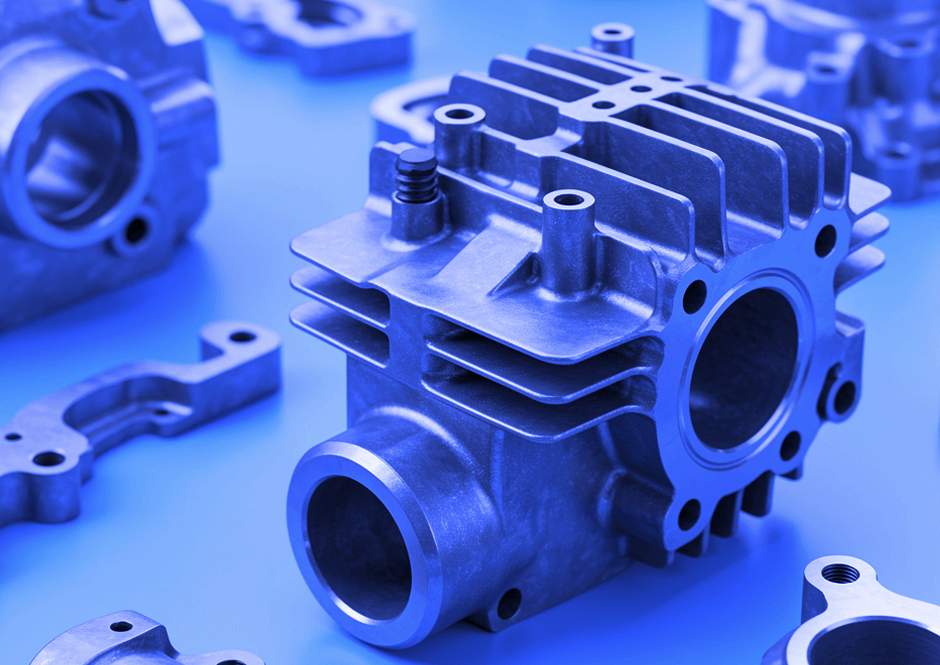Die casting and extrusions are two of the most popular metal manufacturing techniques. Their uses and applications vary slightly and the choice depends on the part requirements of the clients.
What is die-casting?
Die-casting is a simple modern-day process of creating high quality, consistently shaped metal parts at high volumes and can be used for aluminum, zinc, or copper alloys. The process makes use of the application of high pressure to the metal as the temperature gradually decreases. The resulting product has a consistent shape and durable structure. There are five steps in the process which are briefly explained below:
Preparation: Before the die-casting process begins, it is essential to prepare the die first. This is done by applying heat to it until it reaches a certain temperature and then covering it with refractory coating/lubricant. Once this is done, the die halves are closed and clamped together with high pressure.
Injection: Molten metal is taken from the furnace and poured directly into the die through a downward sprue. This can be performed manually or using an automated ladle.
Cooling: After the molten metal has been poured into the cast, it is then left in the clamp to cool and solidify.
Ejection: After some time, the die halves are then unclamped and the cast parts are removed very carefully. This can be done by hand or through the use of ejector pins.
Trimming: As the metal continues to cool, any scrap metal left in the process either in the runner, gate, or sprues, is removed from the casting. Various tools and machines are used to refine the shape before final dispatch.
What is extrusion?
Metal extrusion is a metal shaping technique which, unlike die casting, is suitable only for erect and long parts which include t-shapes, l-shapes, and rectangular and straight tubes.
Extrusion begins when metal is squeezed into a die using a mechanical or hydraulic press. The die is specifically made of wear-resistant material in order to withstand high radial loads. The metal is then cut into specific lengths for further processing. This method is extremely effective for shaping the metal without tearing. Extrusion can be performed at cold, room temperature, or high temperatures.
What are the key differences between extruded aluminum and die-cast aluminum?
Die-cast aluminum can be made into more complex shapes than extruded aluminum. There is also scope for die-cast aluminum to be used in making larger finished products than extruded aluminum. The final products of die-cast aluminum, though very durable, lack the strength of extruded aluminum products. Furthermore, if air gets trapped in the mould, the product has a high chance of becoming porous. Die-cast aluminum has a relatively rough surface and the imperfections are visible. The die moulds used in the process are quite costly and take time to produce. These dies also do not last as long as their extrusion counterparts. In case of process changes, a new mould will have to be prepared which is a time-consuming and costly endeavor. Overall die-casting aluminum is a process that is commonly used in long production runs to reduce initial costs.
Extruded aluminum can also make a variety of shapes but are dependent on the consistency of the cross-section. The size of the products is also completely dependent on the size of the billets used. Extruded aluminum products are generally harder and stronger than their die-cast counterparts and have a smoother finish. Furthermore, extrusion dies are relatively cheaper than die-cast moulds and are easier to make. Extrusion is an adaptable and cheaper process that can be adjusted at short notice. This makes extrusion ideal for shorter production runs.
What is the better alternative?
While die-casting is more expensive upfront, it is more cost-effective taking machining and assembly costs into consideration. Extruded aluminum, albeit stronger and cheaper to produce, has some limitations in terms of shaping and requires additional assembly and post-forming. Both processes have various advantages and entirely depend on the project specifications. Therefore, it is important to thoroughly evaluate and examine the scope and nature of the requirements before choosing either of the alternatives.


